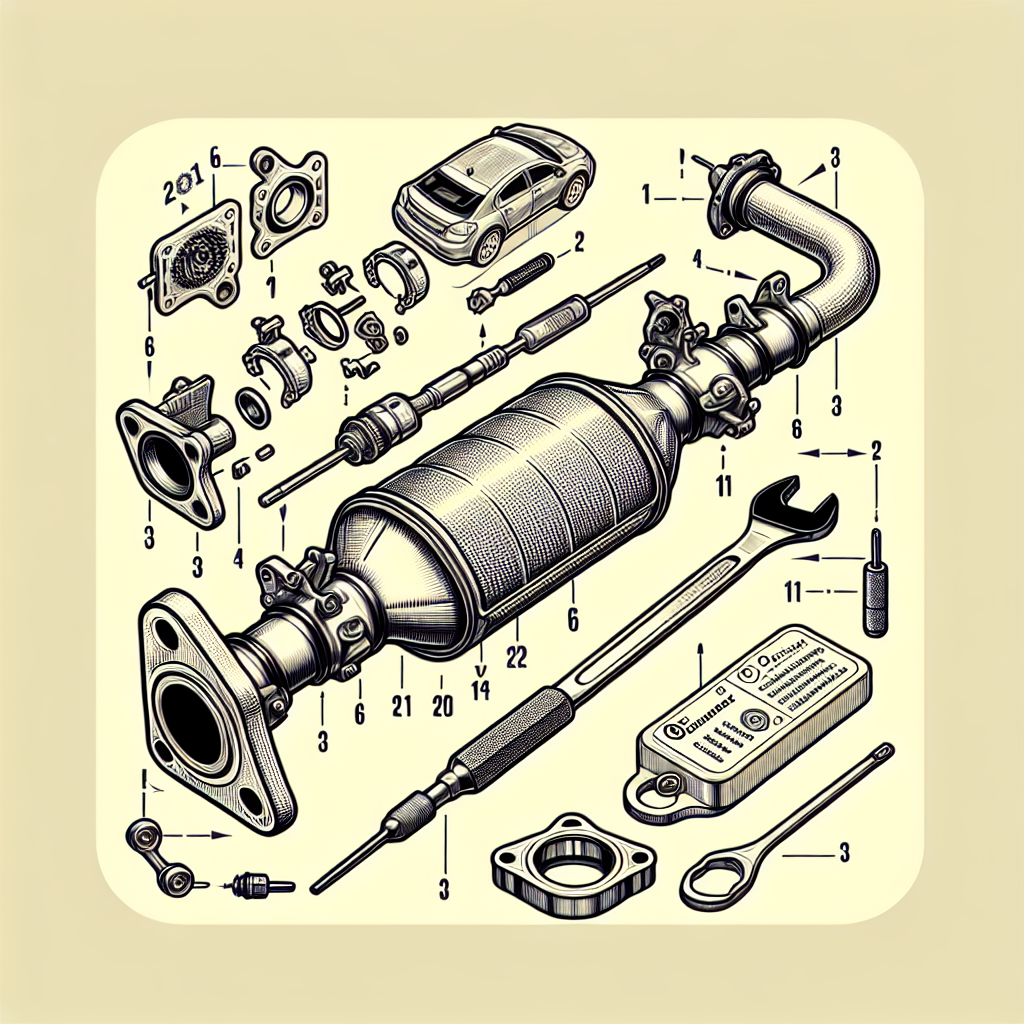
When it comes to vehicle maintenance and modifications, bypassing the O2 sensor on a catalytic converter is a topic that often appears in automotive discussions. Having worked extensively on vehicles for over a decade, I’ve encountered numerous scenarios where bypassing an O2 sensor became necessary for performance tuning or troubleshooting. This comprehensive guide will walk you through the entire process step-by-step for 2024, ensuring you have the expertise to tackle this task confidently.
Table of Contents
- Understanding O2 Sensors
- Why Bypass an O2 Sensor?
- Materials Needed
- Safety Precautions
- Step-by-Step Guide to Bypass O2 Sensor
- Preparation
- Disconnecting the Sensor
- Installing the Bypass
- Testing the Vehicle
- Common Mistakes and How to Avoid Them
- Legal Considerations
- Maintenance Tips After Bypassing
- Frequently Asked Questions
- What is an O2 sensor?
- Why would someone want to bypass an O2 sensor?
- Is bypassing an O2 sensor legal?
- What are the consequences of a faulty O2 sensor?
Understanding O2 Sensors
An Oxygen (O2) sensor is a critical component in your vehicle’s exhaust system. It measures the amount of oxygen in the exhaust gases, providing essential feedback to the vehicle’s computer (ECU). The ECU uses this data to adjust the air-fuel mixture for optimal combustion.
Why Bypass an O2 Sensor?
Several reasons might prompt someone to bypass an O2 sensor:
- Performance Tuning: Fine-tuning engine performance without interference from the O2 sensor’s feedback.
- Troubleshooting: Identifying issues related to engine performance or misfires.
- Catalytic Converter Removal: Usually for race cars or off-road vehicles where emissions controls are not required.
Bypassing an O2 sensor is typically a temporary solution and should be approached with caution.
Materials Needed
Before you start, ensure you have the following materials:
- O2 Sensor Simulator/Buddy
- Socket Set
- Wiring Kit
- Heat Shrink Tubing
- Electrical Tape
- Wire Cutter and Stripper
- Gloves & Safety Glasses
Having these items ready will make the process smoother.
Safety Precautions
Safety is paramount when working on any vehicle. Follow these precautions:
- Wear protective gear: Always use gloves and safety glasses.
- Work in a well-ventilated area: Exhaust fumes are harmful; ensure proper ventilation.
- Avoid working on a hot engine: Allow the vehicle to cool down to prevent burns.
Step-by-Step Guide to Bypass O2 Sensor
1. Preparation
First, park your vehicle on a flat surface and ensure it is secure. Disconnect the battery to avoid any electrical short circuits during the process.
2. Disconnecting the Sensor
Locate the O2 sensor that you plan to bypass, typically situated on the exhaust manifold or the catalytic converter. Using the appropriate socket from your set, carefully unscrew the sensor and disconnect the wiring harness.
3. Installing the Bypass
a. O2 Sensor Simulator
Using a simulator (O2 sensor buddy) is the most common method. This device mimics the sensor signal, tricking the ECU into thinking everything is functioning correctly. Follow the manufacturer’s instructions to connect the simulator to the sensor’s wiring harness.
b. Wiring Adjustment
Strip the ends of the sensor’s wires and the bypass device. Twist the corresponding wires together, then cover them with heat shrink tubing for a secure connection. Use electrical tape for added protection and to ensure the connections don’t come apart.
4. Testing the Vehicle
Reconnect the battery and start the vehicle. Monitor the Check Engine Light (CEL) on your dashboard. If the light remains off and the engine runs smoothly, the bypass is successful. If the CEL comes on, recheck your connections and ensure the simulator is functioning correctly.
Common Mistakes and How to Avoid Them
- Incorrect Wiring: Double-check wire connections to prevent faulty signals.
- Not Securing Connections: Loose connections can cause signal loss or electrical shorts.
- Ignoring Safety: Always follow safety precautions to avoid accidents or injuries.
Legal Considerations
Bypassing an O2 sensor can be illegal in many areas, particularly where strict emissions laws are enforced. Always check local regulations before making modifications. This procedure is often confined to off-road or racing applications where emissions controls are not required.
Maintenance Tips After Bypassing
Regularly inspect your bypass setup to ensure it remains secure. Periodic checks will prevent issues such as unexpected CEL activations or performance problems. Consult with professional mechanics if you notice any anomalies.
Frequently Asked Questions
1. What is an O2 sensor?
An O2 sensor measures the amount of oxygen in a vehicle’s exhaust gases, helping the ECU adjust the air-fuel ratio for optimal performance and emissions control.
2. Why would someone want to bypass an O2 sensor?
Bypassing an O2 sensor can help in performance tuning, troubleshooting engine issues, or accommodating alterations like a catalytic converter removal in race or off-road vehicles.
3. Is bypassing an O2 sensor legal?
Bypassing an O2 sensor is generally illegal on public roads due to emissions regulations. It is mainly used in racing or off-road contexts where such laws do not apply.
4. What are the consequences of a faulty O2 sensor?
A faulty O2 sensor can lead to inaccurate air-fuel mixture readings, resulting in poor engine performance, increased emissions, and decreased fuel efficiency.
For more detailed guides and tutorials on vehicle maintenance and performance tuning, visit the following links: